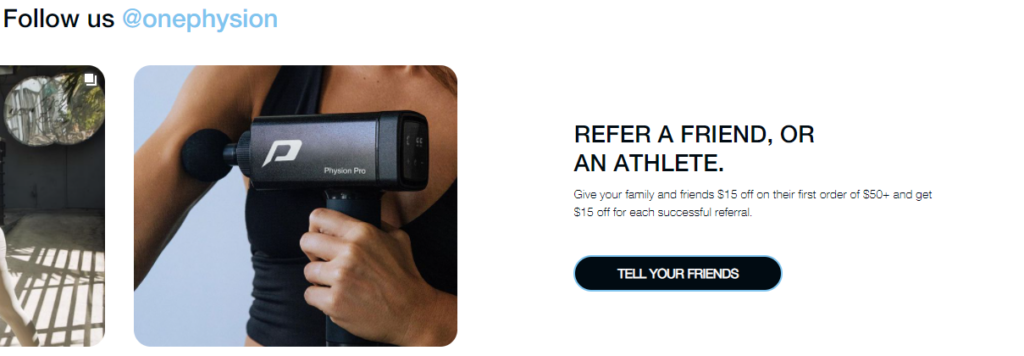Statistics show that affiliate marketing spending in the US for the year 2022 will reach $8.2 billion. That’s over a 10% increase from 2021 ($7.4 billion)!
This rapid growth of the affiliate marketing channel is because of its (comparatively increasing) effectiveness:
- Estimates show affiliate marketing accounts for 16% of all online sales in the US and Canada.
- Besides, while the costs of most popular marketing channels (like Facebook ads) are rising, the costs of running an affiliate marketing program have remained constant.
Long story short, affiliate marketing works, and hence, brands are increasingly investing in it.
But what exactly is it and what does successful affiliate marketing look like?
In this beginner’s guide, we answer these fundamental questions (and more) for you if you’re thinking of jumping the bandwagon.
What is Affiliate Marketing?
Affiliate marketing is a marketing arrangement wherein an online retailer (the ‘brand’ or ‘business’) pays a commission to an external entity (the ‘affiliate’) for sales generated from its referrals.
This (👆) is the formal definition of affiliate marketing. However, there’s one more common definition, which is from the affiliates’ perspective (i.e., the perspective of people on the opposite side of a brand affiliate program – affiliate marketers, bloggers, YouTube video creators, etc.):
Affiliate marketing is a digital marketing strategy where companies incentivize people to promote unique links or codes that refer their audience to purchase.
A well-known example of affiliate marketing is the Amazon’s affiliate program called Amazon Associates. Amazon affiliates share links to Amazon product landing pages with their audiences and in return receive commissions. Some affiliates are so successful they create their own affiliate marketing business.
What is the Difference Between Affiliate Marketing and Other Marketing?
Affiliate marketing is similar to other marketing programs, and it’s a core part of a greater marketing strategy. It has the shared goal to increase revenue and drive awareness of your product or service. The goal for affiliate marketing is to drive affiliate sales. However, affiliate marketing leverages a network of people who use word-of-mouth to promote and refer others to your product. The affiliate can create creative content on their own accord–Like a product review or tutorial that includes the product. Brands may create specific affiliate products that if promoted can earn affiliate commissions.
This is different from other marketing channels that are more straightforward like email marketing or search engine optimization (SEO). However, affiliate marketing can fuel word-of-mouth and make other marketing efforts easier.
What is an Example of a Company That Uses Affiliate Marketing?
Physion is one of the 1000+ ecommerce brands that use Social Snowball to power their affiliate program. Let’s take their example to understand affiliate marketing more clearly.
The Physion affiliate marketing program gives $15 to their affiliate for every successful sale they bring.

In other words, when someone signs up for their affiliate program and refers a friend or audience member to them, they pay them $15 for bringing the sale. For example, if someone watches this video and uses Richard’s affiliate code or affiliate link to buy from Physion, Richard gets $15:

(The viewer gets $15 off as well in Physion’s case, but many brands only incentivize their affiliates and not the affiliates’ audiences).
What are the Types of Affiliate Marketing?
Unattached affiliate marketing
Unattached affiliate marketing is when the affiliate promotes the seller’s products with no direct connection between the affiliate’s site and the product they’re promoting. The seller might provide the affiliate with content, however there is no formal partnership in place.
Involved affiliate marketing
In contrast to unattached affiliate marketing, involved affiliate marketing is when the affiliate is more active in promoting the product and makes a strong recommendation to use it. This could be with a tutorial or product review. Typically the seller provides the affiliate with education on the product and guidelines to promoting the product.
Related affiliate marketing
Related affiliate marketing falls right in between both types of affiliate marketing, where the affiliate will promote the seller’s products without being outright about it being a promotion. This is similar to movies where brands have inclusion inside content, but aren’t purely promotional content.
How Affiliate Marketing Works
You might already have some idea of how affiliate marketing works, especially after the above example. But just in case you’re unclear, here’s a more in-depth explanation:
Affiliate marketing is a three-way collaboration between a business, its affiliates, and an affiliate platform. They play the following parts:
The Business
The business (also known as ‘affiliate advertiser,’ ‘brand,’ ‘company,’ or ‘merchant’) has a product to sell. They run affiliate campaigns to promote their products through affiliates.
The Affiliates
Affiliates (also known as ‘affiliate marketers,’ ‘influencers,’ ‘bloggers,’ or ‘publishers’) are usually people with a significant amount of following (in the form of followers, visitors, viewers, newsletter subscribers, etc.). They join/partner with the business to promote its products for a commission.
The Affiliate Platform
An affiliate platform helps the business and its affiliates to form and execute their affiliate marketing partnership.
Typically, an affiliate platform creates, assigns, and tracks affiliate links/coupon codes provided to the affiliates to ensure each affiliate is paid their due. Also, the affiliate platform helps easily manage and pay the affiliates. Plus, you and your affiliates can view the affiliate marketing KPIs through the platform dashboard.
There are two types of affiliate platforms:
1. Affiliate SaaS:
A SaaS affiliate platform gives you the tech needed to start an affiliate program. Then, you’ll have complete control over the program. But this also means you’ll be responsible for finding affiliates, communicating with them, etc.
2. Affiliate Networks:
Affiliate Networks offer a bit more than the tech needed to run your affiliate program.
For example, affiliate networks have a pool of affiliate marketers signed up on their platform. When you join the affiliate network, those marketers can discover your affiliate program and join you as partners, making the initial recruitment process easier.
However, you’ll get less control compared to an affiliate SaaS. Plus, they are A LOT more expensive than affiliate SaaS. For instance, you can start an affiliate program for $0 with Social Snowball, but you’ll need $500-$3000 to start with an affiliate network.
The Mechanism of Affiliate Marketing
As now you have an idea of all three parties involved in affiliate marketing, let’s look step-by-step at how they combine to run an affiliate marketing campaign.
Step 1: The business launches its affiliate program with the help of an affiliate platform.
Step 2: The business promotes the program and calls for affiliate partners.
Step 3: Interested affiliates join the program and receive unique affiliate links or codes.
Step 4: The affiliate promotes the product/service of the business to their audience. For example, a blogger can write a review of your product on their review site, a YouTuber can mention it in their YouTube videos, someone with an email list can mention it in their newsletter, someone can mention a code in a podcast, etc.
Step 5: A potential customer interested in buying the product clicks the affiliate link and lands on the business’s website.
Step 6: The affiliate platform records the click and maps it to the correct affiliate.
Step 7: The customer places an order.
Step 8: The affiliate platform tracks the whole thing and tells the business that the affiliate marketer has generated a sale.
Step 9: As per pre-agreed terms and conditions, the business pays the affiliate marketer their share.
Do Affiliate Marketers Make Money?
Yes, affiliate marketers who refer others to a product or service typically receive commissions for each sale they refer. Commission can be in the form of cash, discounts, gift cards, or free products. Affiliate marketers can use these types of partnerships for passive income and receive payouts for sharing quality content of the company’s products.
Some content creators become full-time affiliate marketers and entrepreneurs. They do this by creating stronger partnerships with brands and creating their own affiliate site. They use their social media mobile apps for content marketing, and seek to drive their audience back to their own affiliate website. For example, in the description of their YouTube channel, adding an owned landing page to capture traffic for their own online business. Every time they mention a new product, they add a link to their website. This provides them with an owned channel to promote all links and increase their affiliate income.
Why Affiliate Marketing is Beneficial
We already mentioned that affiliate marketing accounts for 16% of the online sales in the US and Canada. And that’s the most obvious benefit of affiliate marketing – more sales. But there are even more practical reasons to create an affiliate marketing program, or at least add it to your marketing tool arsenal, like:
Low-cost marketing channel
Affiliate marketing is a performance-based marketing channel — meaning: you only pay your affiliates for valid sales, and that too after you’ve received the money from the customer and the return period is over.
Let’s talk about metrics. If you’re paying affiliates commission, you’re paying them when they refer a sale. This means it’s guaranteed return on investment. This is different from other channels like paid advertising, where you can pay for ads to run and may not have an efficient pay-per-click (PPC) or cost-per-action (CPA). With affiliate marketing, every time you pay an affiliate, you’re paying for an action.
The only upfront costs are for the affiliate platform and for finding affiliates. And these costs will be pretty negligible if you use an automated platform like Social Snowball. Why? Because you can use the free version of Social Snowball initially. Plus, Social Snowball auto-converts all customers into affiliates, so you’ll have an initial lot of affiliates for your brand.
Access to the target audience
Another significant benefit of affiliate marketing is that you will be able to tap into your chosen affiliate’s audience. Simply by making sure that your affiliate is a person of influence in your industry, you will have access to your target audience. Customers who are referred by an affiliate typically have a higher conversion rate than other newly acquired customers.
Free brand awareness
Affiliates want to earn as much commission as possible, and hence their goal is to drive traffic and sales to your site. For that, they take their audience through the whole sales funnel. And the first stage of any sales funnel is awareness!

In other words, affiliates first make their audience aware of your product, its features and benefits, etc. And then, a small percentage of that audience clicks on their affiliate link to buy.
Free brand credibility boost
Of course, the affiliates will not only spread awareness but also have positive things to say about the product (that’s why they became “affiliates” in the first place!).
Random example: Let’s say you’re a wirecutter company promoting your product through an affiliate. They might hop on their Instagram story and say ‘this is the [new wirecutter product] that I found on a webinar. Since I’ve lived in New York, I’ve been using it for [time], and it’s great for [benefits]. Check it out using this link: [affiliate link].” And because their audience trusts them, your potential customers that are in their audience will click the link and buy from you.
When to Start an Affiliate Campaign
Okay. Now you know the benefits of an affiliate marketing program. You also know the workings of affiliate marketing. In fact, you might even have FOMO knowing that more and more businesses are investing more and more into affiliate marketing. But…is it the right time for you to start an affiliate program for your brand?
The answer: Yes.
Some of the biggest businesses today started very early with affiliate/referral programs and benefitted highly because of the snowball effect and growth loops. See these referral program examples, for instance.
So you should start as early as possible. However, you should ensure you have:
Reached the Product-market Fit Stage
If you have identified the target market for your product/service and have some traction, then it can be said you have reached the product-market fit stage.
Remember, affiliate marketers are not your salesmen, so they should not figure the target market out for you.
Have Adequate Industry Data
If you test some paid media (social media ads, PPC) before launching your affiliate campaign, you will get valuable industry insights.
This will give you access to information such as CTR, acquisition cost, ROI, and customer demographics. This will also help you to choose the right affiliate partners.
Found the Right Traffic Channels
This is extremely important. If your potential customers are on social media, and you are running your affiliate campaign by recruiting bloggers as affiliates, your campaign won’t yield results. Figure out the best traffic channels for your product/service before launching the campaign.
Figured Out the Commission Sweet Spot
You shouldn’t randomly choose a commission rate and go around offering it to your potential affiliate partners. If it’s too low, not many will find it worth their time. On the other hand, if it’s too high, you will lose profits unnecessarily.
How to Get Started with Affiliate Marketing
Ready to start your affiliate campaign? Cool! Here’s a list of things you’ll need:
An affiliate platform
As we mentioned, an affiliate platform helps you manage your affiliate campaigns and reporting. So the first thing you’ll need to make an affiliate program is an affiliate platform.
For Shopify Stores: Try Social Snowball 14-Day Free Trial
Other examples include Clickbank, Shareasale, or Commission Junction.
An affiliate manager(s) (optional)
Without solid management, affiliate campaigns can’t be scaled. An affiliate manager is a person who builds relationships with your affiliate partners and keeps them motivated to promote your product/service to their audience.
You may need more than one affiliate manager if the size of your campaign is large. Initially, though, even you can be the affiliate manager.
An affiliate recruitment process
You need the right strategy to recruit affiliates. If you hire a professional affiliate manager, they’ll handle it. However, if you are going to do it, here are the steps we recommend:
- Step 1: Prepare the affiliate program sign-up page. This could be on your own site, for example web hosting on wordpress.
- Step 2: Identify marketers who are already promoting products/services in your industry. For example, finding those with podcasts, online marketing audiences, or
- Step 3: Reach out to them with your affiliate partnership offer.
- Step 4: Send improved offers to marketers with a larger following.
- Step 5: Follow up with the marketers who are yet to respond.
- Step 6: Recruit the interested marketers.
Promotional Resources
You may think that your affiliate partners have a massive incentive to promote your product/service with dedication, but that is not always the case.
Affiliate marketers sign up for multiple affiliate partnerships, and they may not give some sort of special treatment to yours. That’s why you should provide them with promotional resources you think will increase conversion.
For example, Cloudways does it very well. They give their affiliates banners like this:

And their affiliates use it in their website sidebar, for instance:

Related read: Affiliate marketing best practices for brands
All In All: Win With Them
Affiliate marketing is a great way to amplify word of mouth and increase sales. Because it’s a low-risk, high-reward win-win marketing model, starting an affiliate program is a no-brainer for most businesses.
To start affiliate marketing, try Social Snowball for 30-days free today.




